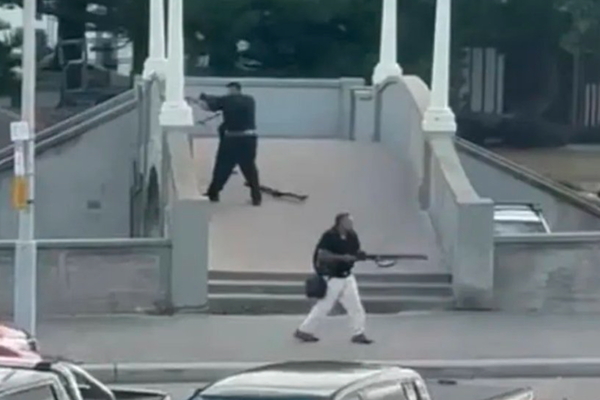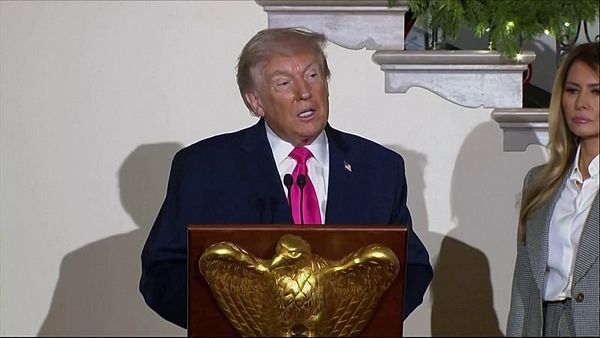
Just before launching its EU presidency last week, Denmark inked a €67 million agreement with Ukraine to let their defence companies build their designs on Danish soil - the first of its kind.
“This is a major contribution to Ukraine’s fight for freedom, as well as to the Danish and European armament,” Morten Bødskov, Denmark’s minister of industry, business and financial affairs, said in a press release last month.
This first deal between Ukraine and Denmark will “ensure a higher degree of integration” for Ukraine in Europe’s wider rearmament, the statement continued.
The agreement comes a month after Ukraine launched an international joint weapons production programme with its allied countries to build “licensed production lines for Ukrainian weapons in partner countries”. But do these recent efforts go far enough?
How are European countries building Ukrainian tech?
There are already several projects in play between Ukraine and private industry in Europe, such as the UK’s production of the Raybird surveillance drone, a “flexible fixed-wing” 20-kilogram drone that can be deployed in under 25 minutes and can fly for roughly 28 hours over a 2,500-kilometre range.
A French auto manufacturer will produce first-person view (FPV) drones in Ukraine, with France’s armed forces minister Sebastien Lecornu calling it a “win-win partnership” in French media. Le Monde reported that automaker Renault was approached for this work.
Sweden’s SAAB, Norway’s Kongsberg, French-German KNDS, Germany’s Rheinmetall, and the US’s Raytheon are reportedly expanding their presence on the ground, according to a June press release from Ukraine’s ministry of defence.
Ukrainian President Volodymyr Zelenskyy said on Monday that his country struck more deals with European allies and a leading US defence company to “step up drone production”.
Zelenskyy didn’t name the businesses in his address. Euronews Next has followed up with the Ukrainian government to find out more about the deals that have been signed but did not receive a reply at the time of publication.
Ukraine is also working on draft legislation for joint weapons production with allies that should be put to a vote in their parliament later this month, according to Rustem Umerov, Ukraine’s defence minister.
The programme includes plans to create a special legal and tax framework to help Ukrainian defence manufacturers scale up and modernise production, including building new facilities at home and abroad, Umerov said.
‘We are not included in the common planning’
These projects are a promising first step but Ukraine is still not included in the “common planning” that the European Union is doing regarding its rearmament, said Olena Bilousova, senior research lead of military at the Kyiv School of Economics.
She added that American-made M982 Excalibur shells dropped in efficiency to reach their targets from 70 per cent to six per cent as Russia continues to advance its electronic warfare (EW). This is a form of artillery that the EU has sent to Ukraine in the past.
“There are a lot of cases like that when we understand that the weapons which were common and still common in procurement of the EU should be reviewed [or] at least … modernised,” she told Euronews Next.
Ukraine’s reliance on drones as a “cheap solution” in its offensives against Russia is also misunderstood by Ukraine’s allies, Bilousova added, noting that the country should be able to build drone procurement strategies with its partners.
It doesn’t mean that Europe should be focused only on procuring drones, Bilousova continued, but that Ukraine should develop with them “new strategies around conventional weapons,” including how many are needed and how they can be protected against drones.
Bilousova said Ukraine could also teach Europe how to speed up the development of new battle-tested technologies based on their model.
Ukraine uses the “Danish model” of military procurement to develop a new technology from idea to product testing on the battlefield, which takes anywhere from three to six months, compared to traditional weapons procurement, which usually takes up to 18 months.
Ukraine can do this through earmarking an estimated $30.8 billion (€29.4 billion) in 2023 for the war effort, a level that is 20 times higher than the pre-2022 invasion level, a recent report from the Stockholm International Peace Research Institute found.
Crowdfunding through platforms such as United24 has also raised over $1 billion (€950 million) and distributed approximately $930 million (€884.61 million) of that to the Armed Forces of Ukraine in the last three years.
Both pots of money are then redistributed to Brave1, a “united coordinational platform” that provides more than 470 grants worth an estimated 1.3 billion hryvnias (€29 million).
Pan-European approach to Ukraine defence tech ‘unlikely’
Bilousova said it’s not clear what forum would be the best to bring in Ukraine as a “consultant” for rearmament.
But a pan-European initiative to get Ukraine fully integrated into rearmament might not be possible because time is “of the essence,” said Jacob Kirkegaard, senior fellow with the Bruegel think tank.
“The vast majority of this integration will happen at the bilateral level and will be driven by Ukraine’s desperate need for more weapons and the willingness by many member states … to provide the money,” he told Euronews Next.
“That is not, unfortunately, a capability that the EU has as a whole”.
However, it doesn’t stop the Commission from identifying “target projects” that would be of shared interest with Ukraine, such as developing advanced air defence, drone surveillance for subsea internet cables or cybersecurity, Kirkegaard continued.
The EU has already activated a €150 billion "SAFE" loan instrument that lets states borrow money for joint defence projects. At least 65 per cent of the weapons’ components have to be sourced from within the EU or Ukraine.
It’s also launched a joint EU-Ukraine task force to integrate Ukraine into the “defence-tech ecosystem”.
However, Bilousova said that if the Commission doesn’t step back and create a longer-term plan, the weapons it invests in could be “ineffective” and delayed for the next conflict.
“I think it is always a good time to make a strategy even if war is already in place,” she said.







